North Bay Dairy Women: 50 Years and Counting
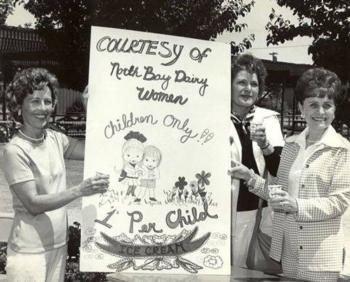
In the fall of 1965 Loretta Silacci was one of the eight women who sat together for the first time to discuss organizing dairy women in Sonoma and Marin Counties, a group that would soon be called the North Bay Dairy Women. The following was noted in the minutes of their gathering:
“Encouraged by John Ammirati, the American Dairy Association Area Rep. and Bill Lawrence, President of District #3 American Dairy Association to form a dairy women’s group, approximately eight women and these men met […] to discuss the subject. Such interest and enthusiasm was shown by the women attending that it was decided to organize a group.”
Within no time, 23 women became the charter members with the mission to promote the dairy industry through the dissemination of authentic information, support producer-processor-consumer relations, and encourage use of dairy foods through advertising and education programs “working for the best interests of the dairy farmer.” As the group celebrates its 50th anniversary this fall and as a third generation North Bay Dairy Woman, myself, I sat down with longtime members to hear their perspectives on what has changed and what has remained the same over the past 50 years.
Then and Now
Founding member, Loretta Silacci, recalled the first time these women met to discuss establishing a group: “John and Bill were very encouraging; they wanted us to have a voice not only in the industry but in the local community. We wanted to teach people about our industry and also help the youth in agriculture.”
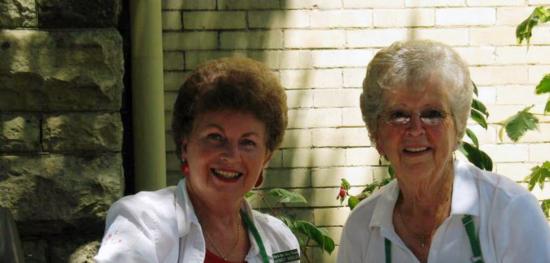
I asked Loretta if she thought she would be sitting here – 50 years later and still a member of the North Bay Dairy Women. “You know at the time there were so few of us, we didn’t think that far ahead, and I don’t think we imagined at the time we would have the large group we do now and that we would be doing such wonderful things for the kids in 4-H and Future Farmers of America.” Now the North Bay Dairy Women is comprised of over 150 women of all ages from Marin and Sonoma County who work in the dairy industry or are from longstanding farm families with ties to the industry. Susan Bianchi, President of North Bay Dairy Women, explains, “I get to work with a great group of people; those who share the same passion for agriculture. We are all committed to the dairy industry and truly believe in what we do for a living. I find that, as women, we tend to be a little more forthcoming with sharing experiences or ways of doing things.”
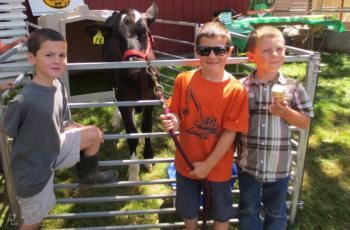
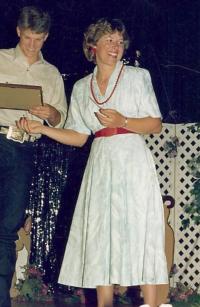
Today, North Bay Dairy Women donate money to the “Milk for Kids” program through the Redwood Empire Food Bank, used to purchase milk for school lunch programs and for families with children under five years old. They also award four scholarships every spring to students wanting to pursue careers in agriculture, and are the host of the District 3 Dairy Princess Ball. As chairperson for over two decades, Judy Buttke coordinates the most impressive Dairy Ball in the state of California. This family-oriented event has maintained its popularity for over 58 years with an average attendance of 500 people. As a past recipient of an educational scholarship, I am grateful to know this group of ambitious and powerful women who have influenced my own career.
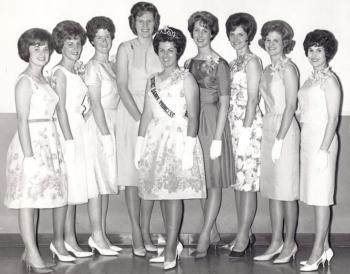
The Changing Role of Women
For many North Bay Dairy Women, the roles they play on the ranch have evolved over time. Susan Bianchi reflected, “If I were to compare myself to my mother: I worked off the dairy, she worked in the home. She cooked three hot meals a day for employees, since most housing was simply a room with shared bathrooms and no kitchen. Today, our employees receive full housing as a part of their employment. My mother was rarely involved in the day-to-day business operations. She was too busy cooking and raising children. Today’s dairywomen have a much stronger role in the business. They are actively participating in all aspects of the business and are respected voices in the industry.”
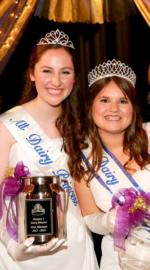
Loretta Silacci recalled the change in the role women have in agriculture today: “I think women have come a long way in this industry, there are so many more job opportunities off the ranch, and women can be involved in the industry and have full involvement in day to day operations on the dairy. Of course back in the day many of us would show up for these meetings, get right down to business because we only had so much time before we needed to get back home to tend to the children, make dinner, or sometimes I would have to help my husband with the farming.” By “faming” Loretta means driving a large silage truck to help her husband complete harvest on time. “Sometimes though, we would have time to meet at someone’s house after and have a cocktail and enjoy each other’s company. We always exchanged a recipe which is another great part about our group – we are all cooks and loved sharing ideas.” Personally, I was still stuck on the part where she drove a silage truck, attended a North Bay Dairy Women’s meeting, cooked three meals for her family all in the same day. I am a new mother of a six month old baby, and I am not sure I could have made the cut back then!
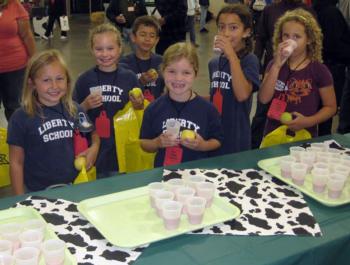
Looking back at annual reports about the dairy women’s group, I learned about the concerns of the time. There are letters referenced to senators, members of congress, and governors on topics of milk pricing, funding for school milk programs, and the need to support a changing dairy industry that was losing the next generation to other industries “free of continual uncertainty.” 50 years later, members speak about similar issues, as well as new issues that have arisen. Susan reflected, “Every generation has faced its own challenges. We lost a lot of Marin and Sonoma producers to water quality challenges in the past, yet so many of us have adapted, changed and carried on. Many couldn’t survive the downturn in milk prices, but again so many adapted, changed and survived. I believe that survival means being willing to adapt to current needs or policies, rather than trying to fight the systems. Dairying had to become more efficient, and those that have done this are still around. Many thought organic certification and production were huge mountains to climb. Yet, currently more than 75% of our producers are now organic.”
The Role of Organic
Susan Bianchi explained about a changing market landscape from conventional to organic milk, “I think that dairy producers in the North Bay have embraced organic production and the strong organic market. Our area is prime for this type of production as so many of the organic practices were already in place on many of the dairies, it simply took some fine tuning and certification to get going. For our North Bay area, honestly, I think that rBST paved the way for a strong organic dairy industry and saved many of us. Had we not changed to organic production, I really wonder if we would still be milking cows today.” Susan continued that she sees environmental stewardship as hand-in-hand with organic certification. “The fact is that farmers know that their land is their most valuable asset and unless it is treated well, they will not get a return from their land. Most farmers are fantastic stewards of the land and have been for many years.” The difference, she explained, is that consumers now believe this based on organic labeling instead of understanding that any of these fundamental production practices have always been at the heart of their operation.
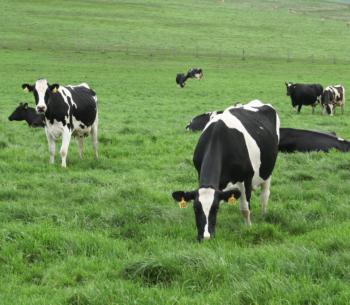
Sue McIssac agreed: “Organic markets and production work well in the San Francisco Bay Area and other highly urbanized areas but in the end, most of us love our land and take—and have always taken—care of it the best we knew how.” However, she also had a word of caution regarding the unintended consequences of organic: “In our area, there is certainly some room for ‘niche’ products because of the closeness to very urbanized and well-paid consumers. My worry is that this may result in backlash to farmers. Just because the consumer wants organic does not mean that it can or should be available at the expense of conventional farmers.”
In contrast, Susan Bianchi hopes that organic production has increased the opportunity for future generations to continue in the dairy industry. While it may still be extremely difficult, almost impossible, for a new generation to enter the industry because of the large capital needed to start a new dairy, she thinks the outlook is great for future generations of established dairies to continue in production on their family farms.
Connecting with Consumers
Lastly, I wanted to have the women share what they feel is most important for people to know about dairy farming. Without any reservation, Sue McIssac said: “Be informed about what foods you eat, buy local. Wipe the word ‘sustainable’ from your brain… of course we are sustainable! My husband’s family has been farming in Marin since the 1880s; if we did not follow sustainable practices, we would have been gone decades ago. We love our land and animals nearly as much as we love our own children, and we take care of them because we know they are our future and our pride.” Susan Bianchi agreed: “I would really like people to know that most agricultural operations are family farms. And guess what? Some successful family farms form corporations, but they are still family farmers! And… as livestock producers, consumers need to really understand that our cattle are well taken care of, as is our land. We are not opportunists who decided to buy some land and some cows and try to get rich. We are proud of our industry and the products we produce. We love what we do. We love our way of life. And there are no antibiotics in your milk or your meat, ever! Whether conventional or labeled ‘organic,’ ‘humanely-raised,’ etc. Buy local! Get educated! Talk to farmers, ask questions, and take the time to research and understand.”
Going back to when it all started, the passion for what they do is inherent in a letter written to the Director of the State Department of Agriculture on August 24, 1966:
“We do not ask for anything we are not willing to work hard to earn… Instead, we are asking for an opportunity to prosper in a business we love and that will reflect our pride and our intelligent efforts...”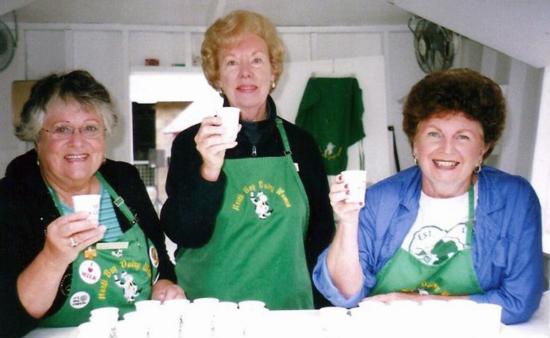
To learn more about the North Bay Dairy Women, visit their blog at www.dairywomen.blogspot.com



